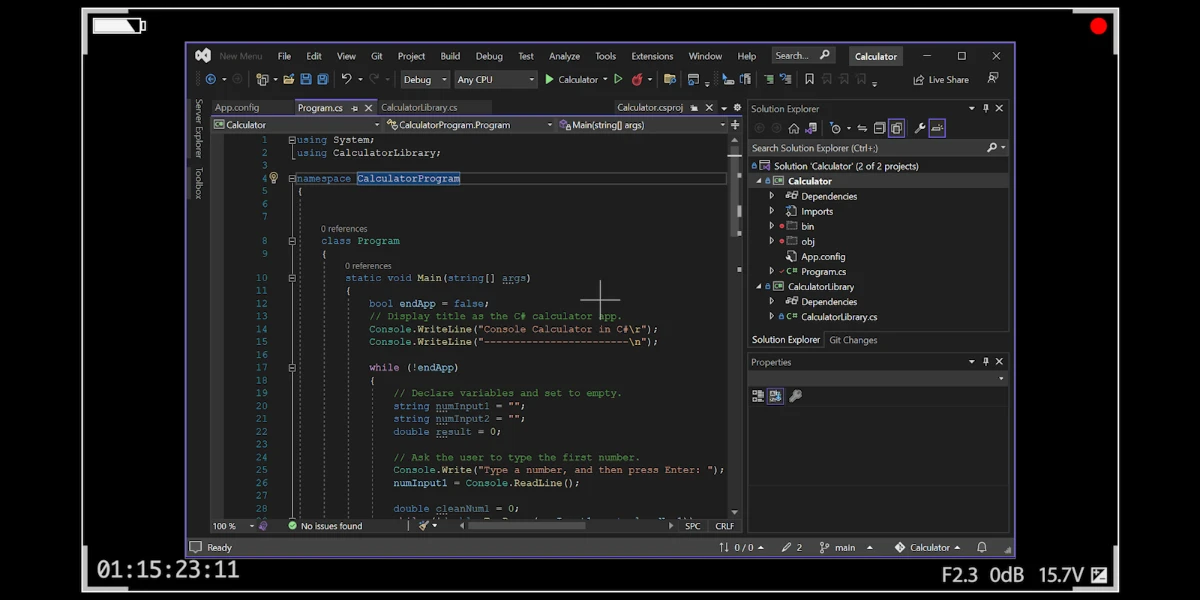Category: Software Development Tips & Tricks

Sending APNS Push Notifications Using C#
Over the years, we have built many mobile applications across numerous industries. One of the most common features of these mobile applications is sending push notifications. Most applications we have built have used third-party services to send these notifications. But how hard is it to send APNS notifications? It’s really not that hard. But why…
Read more…

Cognito Basic User Operations in C#
When building a solution on top of Cognito, we will often build on top of the existing Cognito user interface. But, it is possible to make all of the authentication calls without using it in a UI. In this blog post, I’ll show how to use C# to make these calls. You probably should avoid…
Read more…

Rate-Limiting Requests with RxJS
Recently, I had an issue in a front-end application in which a user was allowed to click around a calendar and begin loading any day that was tapped. Each day triggered a semi-expensive API call, which could take a second or two to complete. The user was free to click around on more days and…
Read more…

Setting Up User and Password Verification with Cognito
With most solutions, we want to use an IDP (Identity Provider) to manage users. This almost always involves redirecting to a hosted web page to handle user authentication. After the user is authenticated, they are redirected back to our web application. That is a preferred way to handle this problem, mostly because it keeps us…
Read more…

Searching Text in C# Using Embeddings with OpenAI
The problem we’re solving today is semantic searching text in C#, using tools provided by OpenAI. A semantic search in this instance refers to searching on the searcher’s intent and the contextual meaning of the query, rather than a simple keyword lookup (for example, search results for “king” may include matches on the word “monarch”)….
Read more…

Using Microsoft CoPilot to Create API Contracts from Other Smaller Contracts
“I choose a lazy person to do a hard job. Because a lazy person will find an easy way to do it.”― Bill Gates Problem We have an established API with a lot of existing functionality. Part of that functionality was the ability to build up requests that could be posted to external APIs for…
Read more…

Upgrading a .NET 6 Function App API to .NET 8 Web API
A while ago, we decided to use an Azure Function App as a Web Api. That was when .NET 6 was new. That filter was used to handle some events around the function methods security. Let’s not dwell on if that …
Read more…

Visualizing Data in Angular Applications with Chart.js
Charting is something we often do in the software we develop. While it isn’t difficult, it can take more work than you might think. In this blog post, we will create some very simple charts using Chart.js. Assuming we already have an Angular application, we can install Chart.js using npm. npm install chart.js Now let’s…
Read more…

Publishing Azure Functions from JetBrains Rider
You probably shouldn’t deploy straight from JetBrains Rider to an environment within Azure. Doing so might get you into a bad situation, or at least setting yourself up for a bad situation. But there are a couple of scenarios where this might be useful. The first is if you are building a throwaway prototype and…
Read more…

Using Screen Recordings in Your Pull Request Process
With the increasing efficiency demands on today’s developers, the Pull Request (PR) process can benefit from a visual demonstration of the changes. The importance of effective communication, thorough testing, and seamless knowledge transfer becomes increasingly evident. One powerful tool that encapsulates these elements is screen recording. Integrating screen recordings into the PR process is an…
Read more…